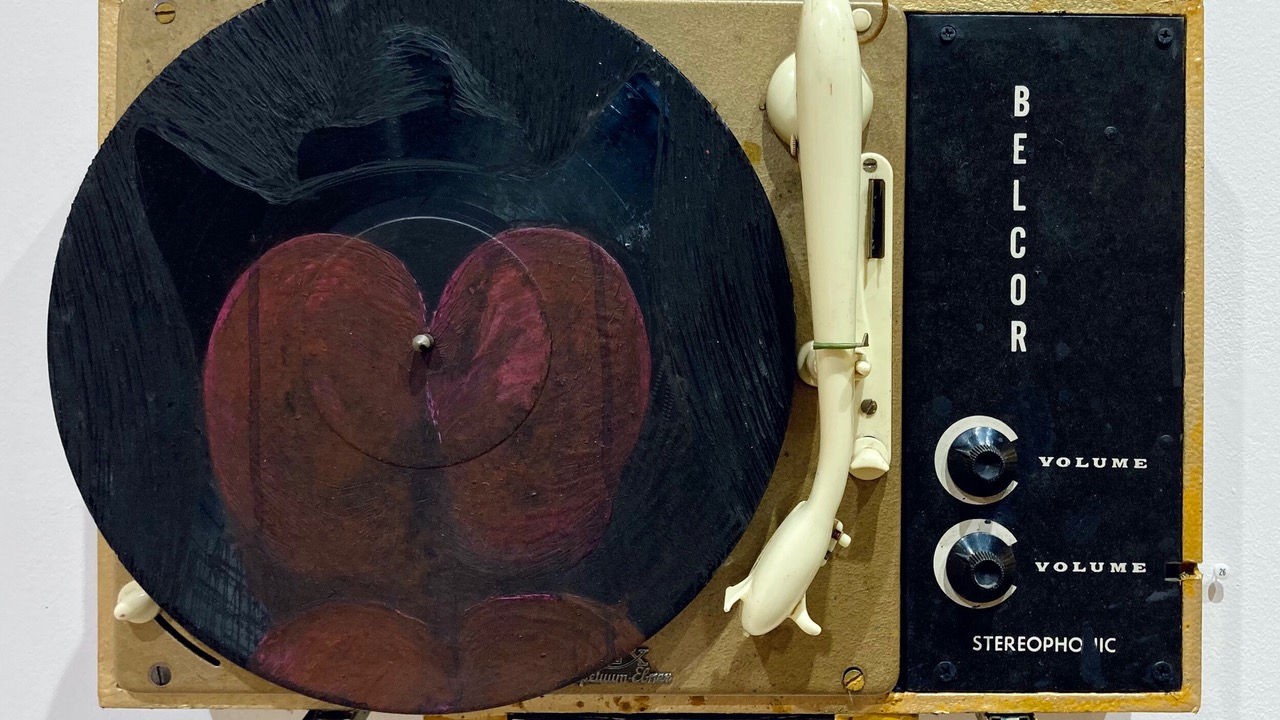Jersey City Times Art Review
THE PLACE FOR JERSEY CITY NEWS


What becomes of an old character? Does it retain any of the peculiar characteristics that endeared it to audiences when it was new? Or does it grow increasingly indistinct until it is absorbed by the static and white noise of popular culture? Before the demands of commerce tore him asunder, and countless remixes and collaborations diluted his integrity, poor Mickey Mouse possessed a distinctive personality. The passage of time has pared Mickey down to a silhouette and a clutch of signifiers: a pair of round ears and white gloves, a corporate logo, a half-empty vessel, a soda pop gone flat.
Felix The Cat is older than Mickey. He was created over a century ago, and he’s been fading in plain view ever since sound was added to motion pictures. But in his Gilded Age prime, Felix was incredibly popular: famous enough to leave a burn mark in his image on the collective imagination. The spirit of the Cat retains enough psychic power to guide the hand of at least one contemporary artist — painter and sculptor Paul Leibow, whose “FeelLicks” is on view at Novado Gallery (110 Morgan Street) until October 16.
This playful, irreverent show uses the figure of Felix, or what’s left of him, to comment on sexuality, decay and reassembly, mechanical reproduction and corporate branding, and the ubiquity and ambiguity of the commercialized image. But mostly, this show is an examination of a character at the end of the line, and the radioactive quality of an icon in decay, well past its half-life but still generating audible clicks on the Geiger counter.
Leibow, not a man to pass up a pun, literalizes the notion of “branding” in the bluntest way possible. He applies a hot iron stamp made in the shape of the top of Felix’s head to some of his works. The branding iron is an imposing device, and it leans against a gallery wall with more than a trace of menace. In a video that’s very much part of this multimedia presentation, Leibow heats up the iron in a backyard fire and sears Felix’s huge, train-tunnel eyes and jagged, fanglike ears on to canvas.
The Cat’s questioning half-face haunts most of these works: sometimes burned on, sometimes painted in acrylic, sometimes superimposed on the backsides of pots or the vinyl of a record on a turntable or whispered on the side of a motorcycle helmet. Felix is everywhere and nowhere, a friendly ghost and a spooky apparition, a fragmented after-image lurking somewhere behind the eyelids of American filmgoers. You can close your eyes to the brand, Leibow’s work implies, but it still lingers in the back of your mind. You may have forgotten Felix, but he’s not quite through with you.
The show draws connections between the Cat and other mass-marketed characters whose edges are getting blurry with age and constant adaptive reuse: Batman, whose horned mask calls back to Felix’s design, the cheery Japanese superhero Anpanman, who, in a striking work on paper, is shown dissolving into Felix, hints of the Simpsons and American Gothic, other echoes from pop-cultural consciousness. Leibow’s FeelLicks is constantly in the act of submerging — sometimes falling into sleep, sometimes slipping into a puddle, sometimes nearly swallowed by the painted backgrounds. His demise seems imminent, and he doesn’t seem to be fighting it too hard.
Yet the most provocative and therefore most successful work in this show is the loudest, bossiest, including a great wooden half-head, painted pink and black and set to squat against a back wall covered in antique classified advertisements from the comic pages. Here, as elsewhere in the show, the two ovals of Felix’s eyes resemble a pair of butt-cheeks. Was Felix always mooning us? Was Batman? Did it take a mind as pleasantly twisted as Paul Leibow’s to tease the callipygian implications from these famous designs?
Leibow gives us a clue in the show’s best piece: a motley FeelLicks head made of old tin, metal pieces, wood, and what appears to be a sawed-off top of a suitcase. Here is a Frankenstein Felix, made of jagged parts, cobbled together and from materials in disrepair, but still weirdly fascinating and surprisingly solid. The piece summarizes the show’s implicit argument — the vintage character belongs to the visionary who can hold it together in the centrifuge of pop culture, hammer it into shape, twist it all around, and breathe into it a new spirit.


